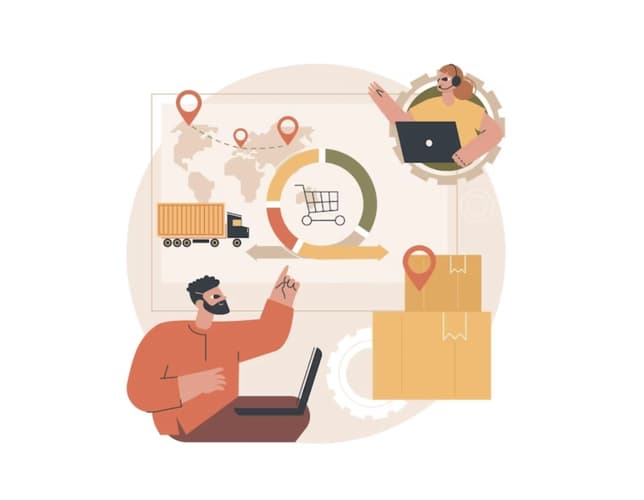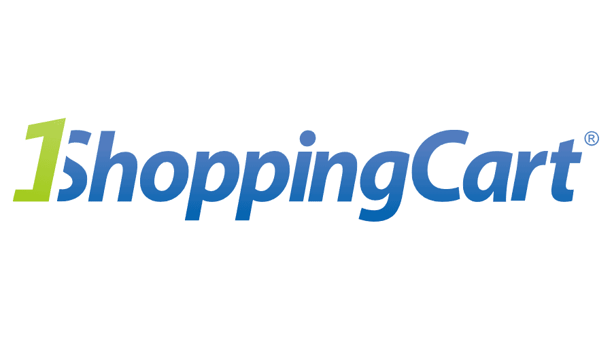
Are you planning to step into the eCommerce industry? Want to set up your eCommerce store to sell digital products online? If yes, you need to know about eCommerce shipping and order fulfilment process.
eCommerce shipping and fulfilment encompass the steps involved in getting purchased items from an online retailer to the customer's doorstep. This includes the preparation of orders for shipment, the actual transportation of goods, and the provision of information on the delivery status.
The end goal of eCommerce shipping and fulfilment is to provide a smooth and satisfying experience for the customer, from the time they place an order to the moment they receive their package. This is achieved by ensuring timely delivery, providing tracking information, offering responsive customer support, and managing returns effectively.
Mastering eCommerce shipping and fulfilment is crucial to the success of any online business. It is a complex process that requires careful planning, execution, and continuous improvement. By focusing on improving brand reputation, increasing sales, and reducing costs, eCommerce businesses can provide a better customer experience, enhance their competitive advantage, and achieve long-term success.
How To Master eCommerce Shipping And fulfilment?
Ecommerce shipping and fulfilment can be a complex and challenging process, but with the right strategies and tools, it can also be a competitive advantage for your business. In this article, we’ll explore several key elements of successful ecommerce shipping and fulfilment strategy.
Set Your Shipping Rates
Shipping rate refers to the cost of delivering a package from one location to another. It typically includes the cost of the shipping carrier's services, such as transportation, handling, and any additional services such as insurance or tracking. Shipping rates are typically charged to the customer and are an important aspect of the overall cost of goods sold in an eCommerce business. There are several options to choose from, including free shipping, real-time shipping fees, and flat rate shipping.
Free Shipping
Free shipping is a popular option among eCommerce businesses. It's a great way to attract customers and increase sales, especially if your competitors are charging shipping fees. However, you need to make sure that you can still make a profit while offering free shipping. You can do this by either increasing the price of your products or by finding more cost-effective shipping options.
Real-Time Shipping Fees
Another option is to charge real-time shipping fees based on the weight and size of the order and the shipping destination. This option can be more accurate, but it requires additional work, such as setting up shipping calculators and ensuring that the fees are updated regularly.
Flat Rate Shipping
Flat rate shipping involves charging a fixed fee for all orders, regardless of the weight or size. This is a simple option that is easy to set up and maintain. However, it may not always be cost-effective for larger orders, so you need to consider your margins carefully.
Choose Your Order fulfilment Method
Order fulfilment method refers to the process by which an eCommerce retailer receives, processes, and delivers an order to a customer. There are several different order fulfilment methods, including: in-house order fulfilment, third-party order fulfilment, and drop shipping.
In-House Order fulfilment
In-house order fulfilment involves handling all aspects of shipping and fulfilment in-house, from picking and packing to shipping and customer service. This is a great option for small businesses, as it provides complete control over the fulfilment process. However, as your business grows, it may become more difficult to manage the entire process in-house, and you may need to consider other options.
Third-Party Order Fulfilment
Third-party order fulfilment involves outsourcing the shipping and fulfilment process to a third-party company. This is a great option for larger businesses, as it can save time and reduce the workload, allowing you to focus on other aspects of your business. However, you need to choose the right third-party company to ensure that the shipping and fulfilment process runs smoothly.
Dropshipping
Dropshipping is a fulfilment method where the retailer does not keep any stock in-house but instead transfers customer orders and shipment details to the manufacturer or wholesaler, who then ships the products directly to the customer. This is a cost-effective option, as you do not need to invest in inventory, but it may result in longer shipping times and lower control over the fulfilment process.
Calculate Shipping Costs
Shipping costs are a significant expense for eCommerce retailers and can impact profit margins. By accurately calculating shipping costs, retailers can make informed decisions about pricing and marketing strategies, and ensure that they are able to maintain healthy margins.
Moreover, offering transparent and accurate shipping rates can improve the customer experience by setting clear expectations and avoiding unexpected charges. The shipping cost will depend on several factors, including:
Package Size And Weight
The size and weight of your package will impact the shipping costs. Larger and heavier packages will cost more to ship. It's important to choose the right packaging materials to keep the size and weight of the packages to a minimum, while still ensuring that the products are protected during transit.
Origin Country And Destination Country
The origin country refers to the country where the products are being shipped from, while the destination country refers to the country where the products will be delivered to. The shipping cost will vary depending on the origin and destination countries, as shipping distances, customs duties, and taxes may impact the cost.
Speedy Delivery
Speedy delivery options, such as express shipping, can also affect the shipping costs. Offering fast delivery options can improve customer satisfaction, but it will also increase the shipping cost. Retailers need to weigh the cost against the value it brings to the customer and their business.
Consider Your Margins
When deciding on your shipping cost, make sure you consider your profit margin. You need to make sure that you are making a profit on each order, even after shipping costs are taken into account. In addition, it's important to consider shipping carriers, as different carriers may offer different shipping rates and services. Retailers should compare shipping rates and services from multiple carriers to find the best option that meets their needs and budget.
Shoprocket, a leading eCommerce platform, offers a solution to these shipping cost challenges by automatically calculating shipping rates based on various factors including package size and weight, origin and destination country, and shipping speed. This feature makes it easy for retailers to offer transparent and accurate shipping rates to their customers, and to ensure that they are able to maintain healthy margins.
Shoprocket integrates with multiple shipping carriers to provide a variety of shipping options and rates, allowing retailers to find the best option that meets their needs and budget. With Shoprocket's automatic shipping rates, retailers can focus on growing their business and improving the customer experience, while leaving the complex shipping calculations to the platform.
Packaging And Marketing
Packaging refers to the process of preparing a product for shipping, including the selection of the type of container, the design of the packaging, and the materials used. The packaging of a product plays a critical role in protecting the product during shipping, as well as in promoting the product to customers.
In eCommerce, the packaging of a product is an opportunity to enhance the customer's unboxing experience and leave a lasting impression. A well-designed packaging can help to increase customer satisfaction and brand loyalty. When selecting packaging materials, it is important to consider factors such as protection, cost, and sustainability.
Packaging Options
Packaging options refer to the various ways in which eCommerce stores can package their products for shipping. Ranging from boxes and envelopes to bags and poly mailers, there is a wide range of packaging options. However, before you choose your packaging option, you need to consider the following points:
Packaging Type
When choosing your packaging type, pay attention to the type of product you are selling and the size and weight of your shipping box.
For instance, delicate and fragile items are susceptible to damage and breakage during transportation, so extra padding is required to protect them. This extra padding can come in the form of bubble wrap, foam, or other cushioning materials. However, this can enhance the shipping cost.
On the other hand, for clothing items, you can just use poly mailers. Not only are they lightweight but also reduce the shipping cost. Moreover, they can adjust to different volumes and weights, depending on what is included in the package.
Custom Packaging
Packaging is the first thing that a customer sees when they receive their purchase, so it's a crucial element of the customer experience. A well-designed and memorable packaging can leave a positive impact and encourage repeat business.
Custom packaging is a way to show that you care about the customer experience and want to make a lasting impression. It can also be an effective marketing tool, helping to increase brand recognition and creating a sense of exclusivity. However, make sure you keep your custom packaging simple. You can choose to customise the packaging material with your logo and branded sticker.
Eco-Friendly Packaging
Eco-friendly packaging is packaging that has been designed with environmental considerations in mind. It is made from materials that are biodegradable, recyclable, or compostable, and it minimises the amount of waste produced during the packaging and shipping process. Using eco-friendly packaging for your products is important, especally if eco-friendliness is a value of your business.
Insurance And Tracking
Shipping insurance and tracking are critical components of any ecommerce shipping and fulfilment strategy. Shipping insurance provides added security and protection for your products and customers. Depending on the type of goods you are selling and their value, insurance can offer peace of mind and help mitigate the risk of lost or damaged packages. Without insurance, you risk losing money and customer trust if your products arrive damaged or fail to reach their destination.
Tracking, on the other hand, gives you visibility into the location and status of your shipments, allowing you to respond to customer inquiries, resolve issues, and plan your next steps accordingly. A tracking number also provides peace of mind for customers, who can see when their order is expected to arrive.
Most carriers offer insurance and tracking services at a relatively low cost, and this can provide you with recourse in the event that a package is lost or damaged during transit. It is important to check with the carrier for details, such as their terms and conditions for insurance coverage, as some may exclude indirect losses or damages caused by delays in delivery.
Custom Declarations And Forms
Customs declarations and forms are required for international shipments, and are used by customs officials to determine the value, origin, and eligibility of your products for import into a foreign country. These forms should be accurate, up-to-date, and filed correctly to avoid delays, fines, or other penalties.
It’s important to stay informed about the customs requirements of each country you ship to, as regulations can vary widely. You can find more information about custom declarations and forms from the relevant government agency in each country.
Tariffs, Taxes And Duties
International shipping can involve various tariffs, taxes, and duties that are levied by the destination country. These fees can vary with the country and are outside of the control of the seller. So, the recipient is typically responsible for these fees. However, it is essential to make customers aware of any potential additional charges so they are not surprised at the time of delivery.
One way to do this is to include a clear and prominent statement on your shipping policy page, detailing any potential tariffs, taxes, or duties that may be applicable to international shipments. For example, you could include a statement like "Please note that the recipient may be responsible for any applicable tariffs, taxes, or duties at the time of delivery."
Customs Declaration Information
Most courier companies that provide international shipping services have a comprehensive custom declaration information page detailing all customs-related information. The customs declaration information required for each shipment will depend on the destination country and the type of products being shipped. Common information that may be required includes:
Description of the products being shipped
Quantity of the products
Value of the products
Country of origin
HS code (an internationally recognised classification system used to classify products)
Purpose of the shipment (e.g. commercial, personal, or samples)
It’s important to ensure that all customs declaration information is accurate and up-to-date, as incorrect or incomplete information can result in fines, penalties, or delays.
How To Lower Shipping Costs For International Shipments?
International shipping can be a complex and costly aspect of ecommerce. However, there are several strategies that can help to lower shipping costs and make the process more efficient and cost-effective. It includes:
Set Up Business Accounts
Having a business account with shipping carriers, such as UPS, FedEx, or DHL, can save you time and money, as well as offer valuable benefits such as discounted shipping rates, online shipping tools, and improved tracking and reporting capabilities. A business account also helps you maintain consistent branding, as your company name and logo can appear on shipping labels, invoices, and tracking information.
Packaging And Labelling
Another key area to focus on when lowering shipping costs for international shipments is packaging and labeling. Proper packaging and labeling can help to reduce the risk of damage during transit, reduce the need for reshipping, and minimise shipping costs.
When selecting packaging materials, consider using lightweight, durable materials that are designed specifically for shipping. This can help to reduce shipping costs, as lighter packages typically incur lower shipping fees. Additionally, using the correct size and shape of packaging can also help to reduce shipping costs, as carriers typically charge based on the size and weight of a package.
Proper labelling is also critical for efficient and cost-effective international shipping. Make sure to include all relevant information, such as the recipient's name, address, and phone number, as well as any special delivery instructions. Including a barcode or QR code can also help to speed up the shipping process and improve tracking and delivery accuracy.
Using A Fulfilment Warehouse
Using a fulfilment warehouse can be an effective way to lower your ecommerce shipping cost, while also streamlining the order fulfilment process. A fulfilment warehouse is a third-party facility that stores your products, handles picking, packing, and shipping, and provides real-time inventory management and tracking.
Some benefits of using a fulfilment warehouse include:
Reduced Shipping Costs: By consolidating shipments, you can negotiate better shipping rates with carriers and benefit from volume discounts.
Increased Efficiency: By outsourcing shipping and fulfilment, you can free up valuable time and resources to focus on other aspects of your business.
Improved Scalability: As your business grows, a fulfilment warehouse can help you manage increasing volumes of orders and shipments without requiring additional staff or resources.
Enhanced Customer Experience: With fast, reliable shipping and easy-to-use tracking, you can provide a superior customer experience and increase customer satisfaction.
The Bottom Line
Shipping and fulfilment are crucial aspects of ecommerce that directly impact the customer experience. By following the steps outlined in this guide, ecommerce businesses can effectively master their shipping and fulfilment processes and ensure timely delivery of products to their customers.
If you are wondering how Shoprocket can help you enter the world of eCommerce, explore our website!






